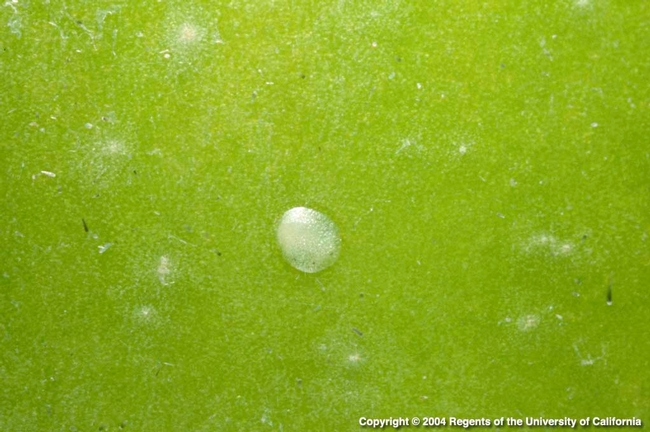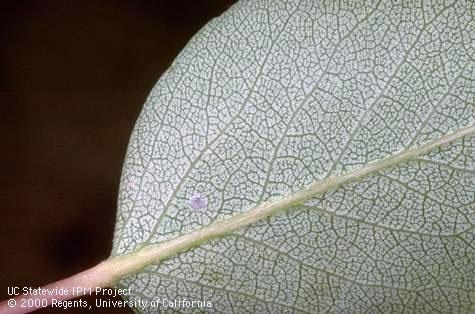If you open up a pest management guide for apple or pears—those books really exist, by the way—the first insect listed is always the dreaded codling moth. These are the creatures responsible for turning an apparent bountiful harvest of fruit into a brown, wormy mess in late summer. Codling moth is the main insect pest that attacks apples and pears in our region.
After overwintering as larvae, the moths emerge in spring, mate and then proceed to lay eggs on the fruit. These eggs hatch into tiny larvae that eat their way into your fruit, ruining it in the process. Fully grown larvae fall out of the fruit, pupate into adult moths (usually on the ground), and the process repeats. In the Owens Valley, there are usually two generations that we worry about controlling. Their development is mostly driven by temperature.
The first generation of adults usually emerges in April, and egg laying follows in a few weeks. The exact timing varies each year and by location, north or south, in the valley. The second generation lays its eggs over an longer period, but it is usually in July. Most of the complaints of ruined fruit by gardeners are from this second generation.

Because there are at least two generations to be concerned with, it is essential to get control during the first generation so that you have fewer moths to fight later on.
While it's possible to achieve control by just using continual sprays through the season with insecticides, this isn't usually how we deal with this pest since that's wasteful and carries risks. Codling moth is usually controlled through a combination of means.
Commercial codling moth control is a complex topic. There is a great body of peer-reviewed literature on the subject. In the home landscape it really isn't possible to implement a full, successful control program. UC has a simpler set of guidelines for landscapes and gardens here.
The approach I would recommend to is to watch your fruit closely. Ideally you should learn what a codling moth egg looks like and learn to identify it. If you want to control with sprays, egg laying is the only feasible time to apply an insecticide, Organic or otherwise.


Codling moth eggs are tiny and hard to see. They look like tiny translucent pancakes about as big around as a pencil's lead. These are usually laid near the blossom end of the fruit. I find them easier to see in the morning or late afternoon when the sun is low in the sky. They are slightly reflective and having sunlight reflecting on them is a big help. Check those fruits you can reach easily from the ground for the eggs by turning the fruit and looking around the blossom end. The third week in April is a good time to start looking in our area. Continue this through mid-May. Remember that Bishop is about 1 week behind Lone Pine in timing. Check for eggs again in late June through July. Egg laying is your best shot for applying controls.
If your eyes aren't good, you'll have a hard time knowing when to time sprays by finding eggs, but there are other options. A favorite home control technique of mine is to remove all fruit of the first generation that has a worm. This alone can go a long way in getting control, especially if you're not surrounded by neighbors with wormy fruit.
If you really want to have clean fruit, in June you can bag fruit to protect them from insect attack. Garden supply companies sell bags for this purpose, but you can improvise as well. Have bags on fruit before egg laying commences. Since we have wind issues, you'll need a way to secure the bags onto the fruit. Bagging is a lot of work! Anytime you see fallen or damaged fruit on the tree, you should remove it immediately whether you bag or not.
Unless you are committed to bagging fruit, most homeowners who demand high levels of control will need to spray some product. These vary from biological organisms that kill the target pest as well as naturally or synthetically derived insecticides. Because these products and recommendations change so often, I'll direct you here for current recommendations. (See bottom of that page.)
Codling moth control is definitely a challenge, but you can expect reasonable control with a little effort on your part. Even if you lose some crop each year, you should still have enough to make growing apples and pears worth your while.
